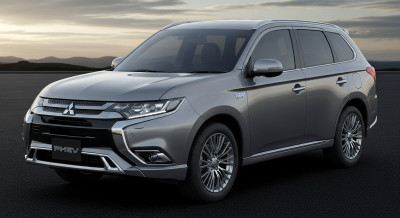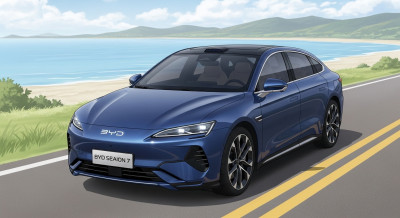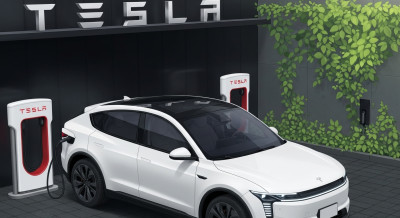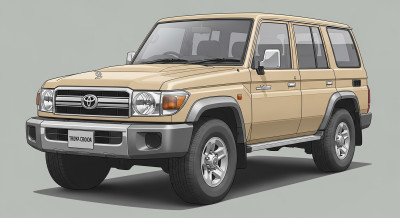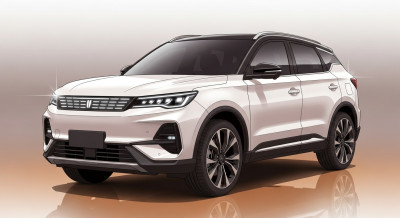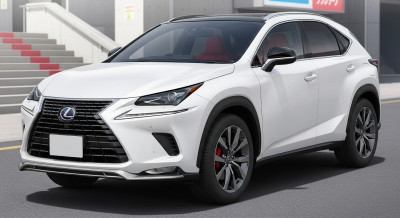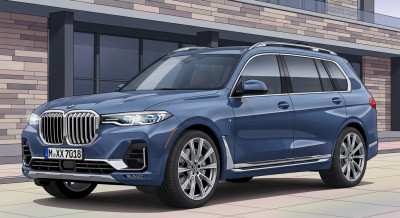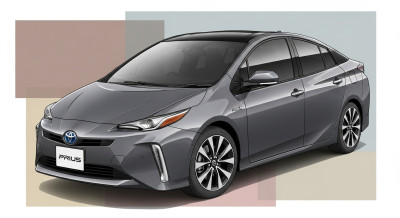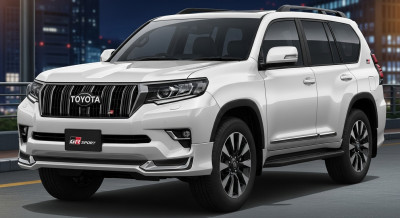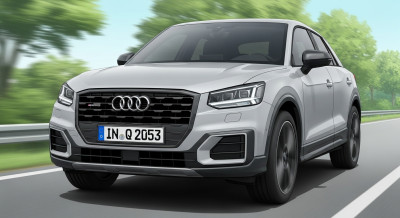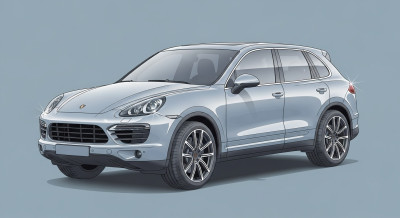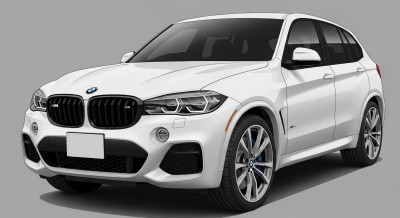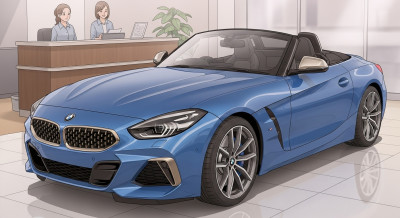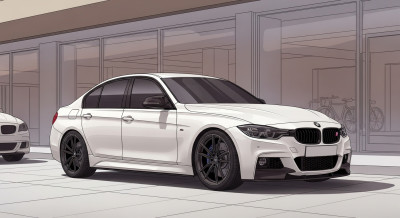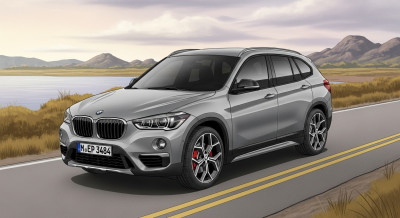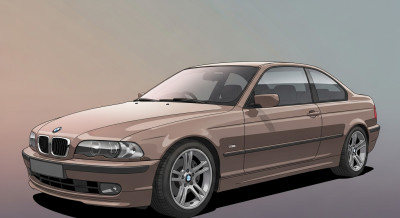2022 Mitsubishi Outlander | Review & Road Test
For the latest Mitsubishi Outlander pricing and information:
https://www.kbb.com/mitsubishi/outlander/
Some of the changes made to the 2022 Mitsubishi Outlander are good ones. Others make me scratch my head. Here’s what I mean.
First, the exterior. I really dig the rear three-quarter and profile looks of this thing. Designers did a solid job there. But I swing around to the front and the face is as oddly proportioned as a Picasso. Look his work up.
It’s busy, confused, the headlights seem too small. There’s just a lot going on and to me, it doesn’t all work together.
On the plus side, however, it does get LED daytime running lights You also get wheels ranging from 18- to 20-inches depending on which trim level you opt for, so there’s that.
Go inside and I’m scratching my head far less. This looks like the interior of a much more expensive car from some lovely European country that’s flush with forests, sauerkraut, and an autobahn.
VO: Here proportions are right on.
The design remains classic, understated. And Mitsubishi has festooned the Outlander with tech galore. There’s an 8.0-inch standard touchscreen with Apple CarPlay and Android Auto. You also get a 7.0-inch digital display playing the meat between the analog gauges.
You can upgrade both of those to a 9.0-inch touchscreen and 12.3-inch gauge cluster with the option of a head-up display.
The Outlander has three rows. And the seats are comfortable.
This is a compact 7-passenger SUV that’s for sure considering its competition. It’s on the same platform as the Nissan Rogue, so there’s one, but the Rogue is only a 5-passenger situation. It’s slightly bigger than the Toyota RAV4, Subaru Forester, and Honda CR-V, but smaller than the three-row midsize Pathfinder, Highlander, Ascent, and Pilot from those same makers.
Other snazzy bits that add to the lovely in-cabin experience are an optional 10-speaker Bose audio system and a panoramic sunroof.
One thing I’m not loving is this puckering happening here in the seats. I’m hoping this is an anomaly and only on our tester. If not this looks way too worn in and ill-stitched for a new car.
Under the hood, there’s only one powertrain on this new model.
You can still get a PHEV but it’s going to be the previous generation that’s being called a 2022. To me, this is a bit of a questionable move.
Especially since Mitsubishi themselves say that it’s the leading PHEV seller in the world.
Instead, the new Outlander gets a Nissan-sourced 2.5-liter air-breathing inline-four. 181 hp/181 lb-ft torque. That’s not a ton of power, and, as a number of Nissan products this engine’s power gets distributed via a CVT.
The CVTs are getting better, but this one does have a significant droning sound especially high up in the rev cycle. These are definitely performance killers, but you get the paddle shifters a d they help a bit if you need some extra giddy-up. But honestly, most people won’t notice or care because of the improved gas mileage you get.
When I accelerate you really do feel the full weight of this car.
To me, that’s more of an issue with the power and the transmission because the underpinnings are actually lighter and stiffer than on the old model. Where those make a difference is in the handling.
Here is where Outlander sees significant improvement. The ride is very comfortable, and the body doesn’t roll anywhere like it used to. The Engineers did a stellar job when it comes to how the Outlander feels driving on the road.
There are bigger brakes here than on the Rogue and they make a huge difference. They’re confident!
The base Outlander ES (Base price: $25,795) comes with the goodies already mentioned as well as forward collision warning, blind-spot warning, and cloth seats. You can get your ES with AWD or add the Convenience Package that gets you 20-inch wheels and Mitsubishi Connect for $1,000.
But the SEL makes the most sense, I think. Starting at around $29,000 you get all that other stuff, plus heated front seats, a leather steering wheel, and a ton of advanced driver safety features like stop and go adaptive cruise control, lane-keeping assist, and wireless charging. See what I mean.
There’s a SE Launch Addition and the Tech Package ($31,145 FWD/$32,945 AWD) that get you this 12.3-inch digital gauge cluster and that sunroof among other extras.
Up in the SEL stratosphere ($31,945 FWD/$33,745) you’re looking at the head-up display, a full leather interior, heated second-row seats, and power seats for your ride-or-die in the right seat.
The SEL Touring, which is the highest you get go here starts at almost $35,000 and basically gives you all the things.
So, a bit of a mixed bag, but the Overlander gets a great interior, excellent tech, and solid driving chops, pointing Mitsubishi in the right direction. That’s this way.
00:00 Year Make Model
0:24 Exterior
1:07 Interior
2:12 Competitors
4:48 Engine
5:30 Driving Impression
For the latest Mitsubishi Outlander pricing and information:
https://www.kbb.com/mitsubishi/outlander/
Some of the changes made to the 2022 Mitsubishi Outlander are good ones. Others make me scratch my head. Here’s what I mean.
First, the exterior. I really dig the rear three-quarter and profile looks of this thing. Designers did a solid job there. But I swing around to the front and the face is as oddly proportioned as a Picasso. Look his work up.
It’s busy, confused, the headlights seem too small. There’s just a lot going on and to me, it doesn’t all work together.
On the plus side, however, it does get LED daytime running lights You also get wheels ranging from 18- to 20-inches depending on which trim level you opt for, so there’s that.
Go inside and I’m scratching my head far less. This looks like the interior of a much more expensive car from some lovely European country that’s flush with forests, sauerkraut, and an autobahn.
VO: Here proportions are right on.
The design remains classic, understated. And Mitsubishi has festooned the Outlander with tech galore. There’s an 8.0-inch standard touchscreen with Apple CarPlay and Android Auto. You also get a 7.0-inch digital display playing the meat between the analog gauges.
You can upgrade both of those to a 9.0-inch touchscreen and 12.3-inch gauge cluster with the option of a head-up display.
The Outlander has three rows. And the seats are comfortable.
This is a compact 7-passenger SUV that’s for sure considering its competition. It’s on the same platform as the Nissan Rogue, so there’s one, but the Rogue is only a 5-passenger situation. It’s slightly bigger than the Toyota RAV4, Subaru Forester, and Honda CR-V, but smaller than the three-row midsize Pathfinder, Highlander, Ascent, and Pilot from those same makers.
Other snazzy bits that add to the lovely in-cabin experience are an optional 10-speaker Bose audio system and a panoramic sunroof.
One thing I’m not loving is this puckering happening here in the seats. I’m hoping this is an anomaly and only on our tester. If not this looks way too worn in and ill-stitched for a new car.
Under the hood, there’s only one powertrain on this new model.
You can still get a PHEV but it’s going to be the previous generation that’s being called a 2022. To me, this is a bit of a questionable move.
Especially since Mitsubishi themselves say that it’s the leading PHEV seller in the world.
Instead, the new Outlander gets a Nissan-sourced 2.5-liter air-breathing inline-four. 181 hp/181 lb-ft torque. That’s not a ton of power, and, as a number of Nissan products this engine’s power gets distributed via a CVT.
The CVTs are getting better, but this one does have a significant droning sound especially high up in the rev cycle. These are definitely performance killers, but you get the paddle shifters a d they help a bit if you need some extra giddy-up. But honestly, most people won’t notice or care because of the improved gas mileage you get.
When I accelerate you really do feel the full weight of this car.
To me, that’s more of an issue with the power and the transmission because the underpinnings are actually lighter and stiffer than on the old model. Where those make a difference is in the handling.
Here is where Outlander sees significant improvement. The ride is very comfortable, and the body doesn’t roll anywhere like it used to. The Engineers did a stellar job when it comes to how the Outlander feels driving on the road.
There are bigger brakes here than on the Rogue and they make a huge difference. They’re confident!
The base Outlander ES (Base price: $25,795) comes with the goodies already mentioned as well as forward collision warning, blind-spot warning, and cloth seats. You can get your ES with AWD or add the Convenience Package that gets you 20-inch wheels and Mitsubishi Connect for $1,000.
But the SEL makes the most sense, I think. Starting at around $29,000 you get all that other stuff, plus heated front seats, a leather steering wheel, and a ton of advanced driver safety features like stop and go adaptive cruise control, lane-keeping assist, and wireless charging. See what I mean.
There’s a SE Launch Addition and the Tech Package ($31,145 FWD/$32,945 AWD) that get you this 12.3-inch digital gauge cluster and that sunroof among other extras.
Up in the SEL stratosphere ($31,945 FWD/$33,745) you’re looking at the head-up display, a full leather interior, heated second-row seats, and power seats for your ride-or-die in the right seat.
The SEL Touring, which is the highest you get go here starts at almost $35,000 and basically gives you all the things.
So, a bit of a mixed bag, but the Overlander gets a great interior, excellent tech, and solid driving chops, pointing Mitsubishi in the right direction. That’s this way.
00:00 Year Make Model
0:24 Exterior
1:07 Interior
2:12 Competitors
4:48 Engine
5:30 Driving Impressions
 LEXUS
LEXUS  AUDI
AUDI  PORSCHE
PORSCHE  ROLLS-ROYCE
ROLLS-ROYCE  LAND ROVER
LAND ROVER  FERRARI
FERRARI  MASERATI
MASERATI  CADILLAC
CADILLAC  CHRYSLER JEEP
CHRYSLER JEEP 















